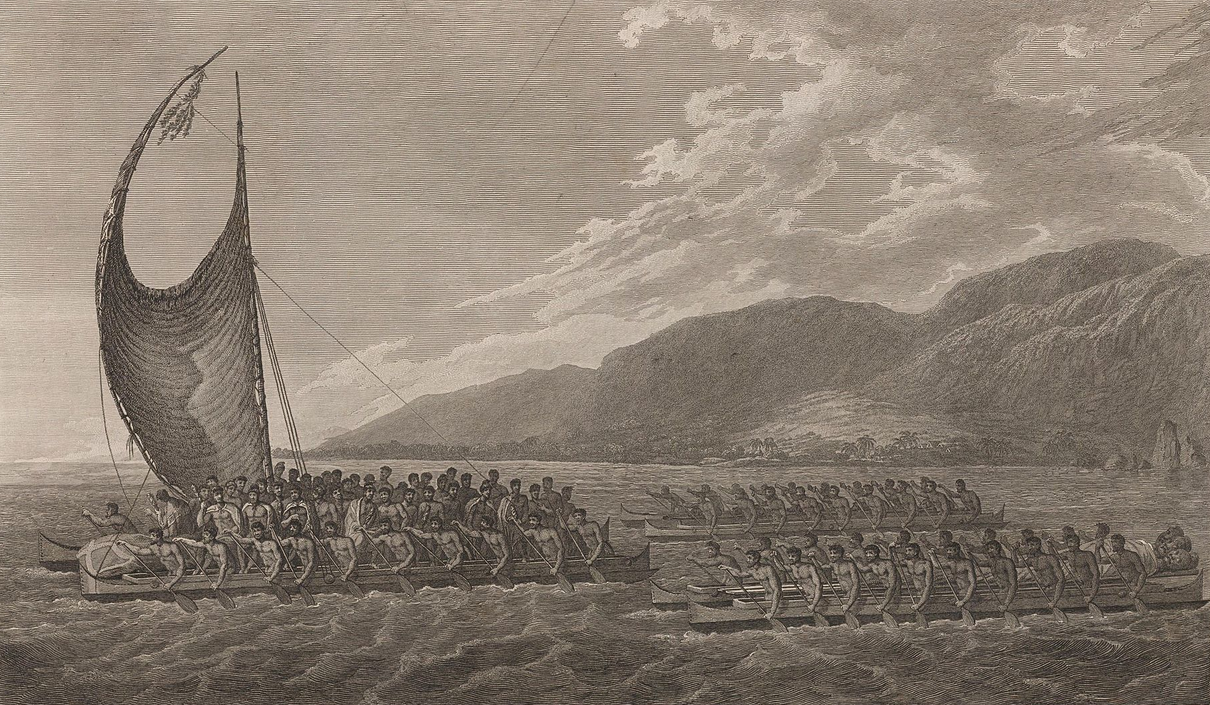What is Hawaii DNA Ethnicity on Ancestry
The results of our AncestryDNA tests may sometimes be what we expect or on occasion may be a big surprise. Either way, often we need a little more information regarding some of the regions that arise in our ethnicity estimates.

One region that is not at all uncommon is the Hawaii DNA region. Those who still live in this region already understand all about its history and culture. There are others, however, who may never have even visited or in fact been aware that they have ancestors from that area.
In this post we will go into more detail with regards to the history, geography and culture of the Hawaii region. We will also discuss what it means to be from this region and how easy or difficult it might be to trace our roots in the Hawaii Region.
What Is the Hawaii DNA Region?
The Hawaii DNA region as the name accurately suggests covers the islands of the US state of Hawaii, located in the Pacific Ocean. Geographically it sits to the west of Mexico and to the east of China in the North Pacific Ocean.

There are eight main islands of Hawaii which are:
- Hawai’i
- Maui
- O’ahu
- Kaua’i
- Moloka’i
- Lana’i
- Ni’ihau
- Kaho’olawe
Hawaii Region History
Early Human Settlement
The placement of Hawaii in the Pacific has meant that it had remained uninhabited by humans until relatively recently. Archaeological evidence suggests that the earliest habitation of the islands arrived around 1,000 – 1,200 AD.
These first inhabitants are thought to have arrived from the Marquesas Islands and to have been Polynesian in origin. This initial wave of migration would be followed by groups from Raiatea and Bora Bora during the 11th century.
The population of Hawaii would gradually grow and chiefdoms would expand from small groups to eventually encompass entire islands in the chain. Chiefs were known as Ali’I and served as the rulers of their settlements. They also had the power to launch war with neighboring chiefdoms to try and extend their power.

Under the Chiefdoms Hawaii was a caste-based society, akin to that of Hindus in India. The growth of the population was achieved through ecological and agricultural practices. These would include upland agriculture (manuka), ocean fishing (makai), fishponds and gardening systems. The spiritual and religious beliefs of the islands, like the lokahi, served to support the systems of the population's survival.
Europeans
Relatively speaking the reign of native Hawaiians would not last long as less than 800 years after the first Polynesians settled in the islands the Europeans arrived in the region. It was in 1778 that British explorer Captain James Cook first made contact with the peoples of Hawaii.
Cook would dub the islands the Sandwich Islands in honor of his patron and sponsor John Montagu, 4th Earl of Sandwich. He would publish the islands' location and listed the native name for the islands as Owyhee. This is a name that is still used today as place names in the region.
There is an indication that Spanish explorers may have sighted and recorded the islands in the 16th century but this can not be confirmed as recorded historical details about location do not completely match.
Kingdom of Kamehameha
Soon after the European first contact internal power struggles between chiefs would begin spanning the 1780s and 1790s. A series of battles would ensue that would culminate in 1795 when the inhabited islands were all subjugated under just one ruler. The ruler would become known as King Kamehameha the Great.
The king would establish the House of Kamehameha, a dynasty that would rule the islands until 1872. Under his successor Kamehameha II in 1819 American protestants started to visit the islands and began converting the Hawaiians to Christianity.
These missionaries are considered as having provided a moral means to rationalize conquest and large scale conversion of perceived heathens. Although the Hawaiians were converted to some degree they still held on to many of their former beliefs as well. They would merge the two systems together but this did not satisfy the missionaries who strive even harder to end traditional practices.
Demise of the Kingdom of Hawaii
Following the death of the bachelor King Kamehameha V who left no heir a popular election took place placing Lunalilo (grandnephew to Kamehameha I) in control. Lunalilo died the next year, and did not himself name a successor. This would ultimately lead to his former electoral opponent Kalakaua being elected as the final Hawaiian monarch.

The decision was not popular and riots broke out. This would lead to the U.S. and Britain landing troops on the islands to restore order. Ultimately the Legislative Assembly would choose King Kalākaua as monarch by a landslide vote of 39 to 6 on February 12, 1874.
Constitution of the Kingdom of Hawaii
The Constitution of the Kingdom of Hawaii was a document drafted by white businessmen and lawyers which stripped the monarch of his authority. It also established rules for voting which essentially disenfranchised native Hawaiians from being able to vote. In 1887 after just 7 years on the throne King Kalākaua was forced to sign this document.
Voting in Hawaii became the privilege of the wealthy white elite while Hawaiians and immigrant laborers no longer had a say in the island's leadership. Referred to as the Bayonet Constitution, the threat of violence was used to get the king's signature.
Attempt to Reestablish the Kingdom
In 1893 the sister of Kalākaua, Liliʻuokalani announced plans for a new constitution. She planned to proclaim herself an absolute monarch. This resulted in a group of mostly Euro-American business leaders and residents forming the Committee of Safety on January 14, 1893. Their intent was to stage a coup d'état against the proposed kingdom and to seek annexation by the United States.
U.S. Government Minister John L. Stevens, quickly responded to a request from the Committee of Safety, summoning a company of U.S. Marines. There was no resistance from the Queen's forces as they were not equipped to hold off such a military action.
In 1898 calls for an annexation of the islands were finally put into practice and Hawaii would become a territory of the United States. It would remain a territory until it gained statehood in 1959.

How Has Hawaii’s Racial Breakdown Changed?
Over the past 50 years the racial breakdown of Hawaii has altered greatly as the table below will illustrate.
The census records for 1970 and 2020 indicate a drop in Native Hawaiian and Pacific Islanders in Hawaii of almost 10% with a slight increase in African American and Native North Americans on the islands.
How Did You Get Hawaii Region DNA?
If you already know that you had family who came from Hawaii or any of the bordering states then you know why you have Hawaii region DNA. If this result came as a surprise you may not know how exactly you came by DNA from this region.
If you have a sizable percentage of DNA from this region then it is likely you have an ancestor who was born in or close to the country of Hawaii.
Is the Result Accurate?
When it comes to ethnicity estimates the higher the percentage you have from a certain region the more likely it is to be accurate. If your percentage is low, however, then it is harder to pinpoint exactly where your most recent ancestors came from.
A low result could mean a distant ancestor from that region. It is best to focus on your highest rated region's matches to determine where your ancestors came from more recently. A low percentage can often be hard to locate because the ancestor in question could be many generations back in your tree.
How to Research my Ancestry from These Regions
The results of a DNA ethnicity test are of course a great place to start especially if there is an unexpected result found in the report. As always of course the DNA cannot tell the whole story and we need to actually do the research work.
A percentage on an ethnicity estimate means very little unless you follow through and start building up your family tree. The relevant ancestors may be several generations back and it may take a lot of research to discover who they were.
If you have specific regions mentioned in your report then you have a good idea of where your ancestor may have originated from. Ancestry DNA even has migratory information from some of these regions through to the final settlement places in the United States or elsewhere in the world.

Using Ancestry you may be able to determine not only who your ancestors were but where they are from in the region and perhaps the reason they decided to move.
Final Thoughts
The human history of Hawaii is a little over 1,000 years old and its first inhabitants seem to come from the Polynesian region. Over the centuries it has seen outside influences from Asian, other pacific islands, Europe and North America.
Hawaiian culture has faced an uphill struggle to survive in its home region and was pushed to its limits by religion and the wants of white settlers. Although Christianity was accepted in the region many of the old traditions still held in spite of laws that sought to stamp them out.
Link To or Reference This Page
We spent a lot of time downloading, cleaning, merging, and formatting the data that is shown on the site.
If you found the data or information on this page useful in your research, please use the tool below to properly cite or reference Name Census as the source. We appreciate your support!
-
<a href="https://namecensus.com/blog/what-is-hawaii-dna-ethnicity-on-ancestry/">What is Hawaii DNA Ethnicity on Ancestry</a>
-
"What is Hawaii DNA Ethnicity on Ancestry". NameCensus.com. Accessed on May 7, 2024. https://namecensus.com/blog/what-is-hawaii-dna-ethnicity-on-ancestry/.
-
"What is Hawaii DNA Ethnicity on Ancestry". NameCensus.com, https://namecensus.com/blog/what-is-hawaii-dna-ethnicity-on-ancestry/. Accessed 7 May, 2024
-
What is Hawaii DNA Ethnicity on Ancestry. NameCensus.com. Retrieved from https://namecensus.com/blog/what-is-hawaii-dna-ethnicity-on-ancestry/.
